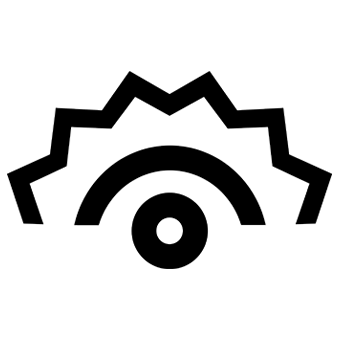jamie kripke for hp: 50 faces, 6 expressions, 2 days
Jamie Kripke’s latest project was inspired by a music video from The Paper Kites. “The art director found this music video that she liked that had this stop-action technique. It used tons of stills that had this morphing effect. Hundreds of portraits were shot the exact same way and run rapid fire so that they all blend together into one face. What we learned pretty quickly is that we weren’t making a music video, so we had to fine-tune what we were going to do so that it worked for the client.”
The client was Hewlett-Packard and the project was to announce their new Enterprise X printer. Kripke was hired by the San Francisco-based agency Doremus. He had previously worked with the art producer on a job for Visa that required both stills and video, and was called back because the HP project required a similar combination of the two.
“The project involved a lot of creative problem solving on the fly”, Kripke said. The agency had given him a rough concept and a single page with a few stills and a script. “There wasn’t even a story board, so it was up to us to figure something out. The project was great because it was a really collaborative effort on the creative part. If you can get enough great people to put their heads together on a project, even if you don’t initially know where you’re going, eventually the concept reveals itself.”
Kripke had looked at some of the other work HP has done, and found that they tended to use rather safe-looking people. He says he went into the first phone call assuming they were going to skew on the safe side. “To the client’s credit, they really wanted to push these sort of real, honest, nerdy characters. The ones with the crazy hairdos and the weird mouths and the eyebrows that look like caterpillars. The result is that the project has some great faces, really interesting faces.”
They shot in Los Angles because there was a better selection of talent readily available. “It’s amazing how fast you can round up this many people with little to no notice,” says Kripke. They had two days to shoot 50 actors expressing six different emotions—a total of 300 images. “We broke it down, we had 10 minutes per person.” On the third day of the shoot, they invited a handful back to film the speaking parts.
What was really exciting, he says, was seeing how each different actor would interpret the expressions in a unique way. “That’s where having actors was really helpful; most of them brought something unexpected to the project. A twist of an eyebrow, a turn of the mouth or a wrinkle in the forehead. It’s amazing how just a tilt of your head can change your expression—I’d be like, oh yeah, that’s how you look skeptical!”
As the images were shot, a selection was made and the raw files were uploaded to the retoucher back in San Francisco. That’s right—all 300 individual frames were retouched, by hand. “Nothing was happening in Lightroom or by batch. It was all one at a time, by hand, with a [digital] brush,” he says.
Contrary to how retouching is often portrayed, the retouching didn’t involve changing people’s faces, but rather creating a dynamic portrait that would read well on screen. “There was also a lot of drawing focus to the eyes because that was what tied the whole thing together. We brightened the eyes, cleaned up stray hairs, and got the background really nice and consistent.”
The agency did ask at one point if some of it couldn’t be automated, but Kripke says he really felt strongly about his approach, and ultimately, the agency agreed. “You might say, ‘Why are going going to retouch 300 portraits by hand, that’s crazy.’ And the reason we do it is because it is kind of crazy. But the result is something that’s impossible to recreate using automation.”
After the images were retouched, they were uploaded and sent to the editor who was working in a different part of San Francisco. “The logistics of managing all these files was a little more complicated than if we’d had everyone on set. But they were in San Francisco, and we were in L.A.” Despite the logistical challenges, the team got the final cut delivered to the client by their deadline.
A big thank you to Nancy and Pat from Doremus for giving Jamie the problem-solving sort of project he loves to shoot and to Sady Callaghan from Purple Poductions for her unflappable production skills.

